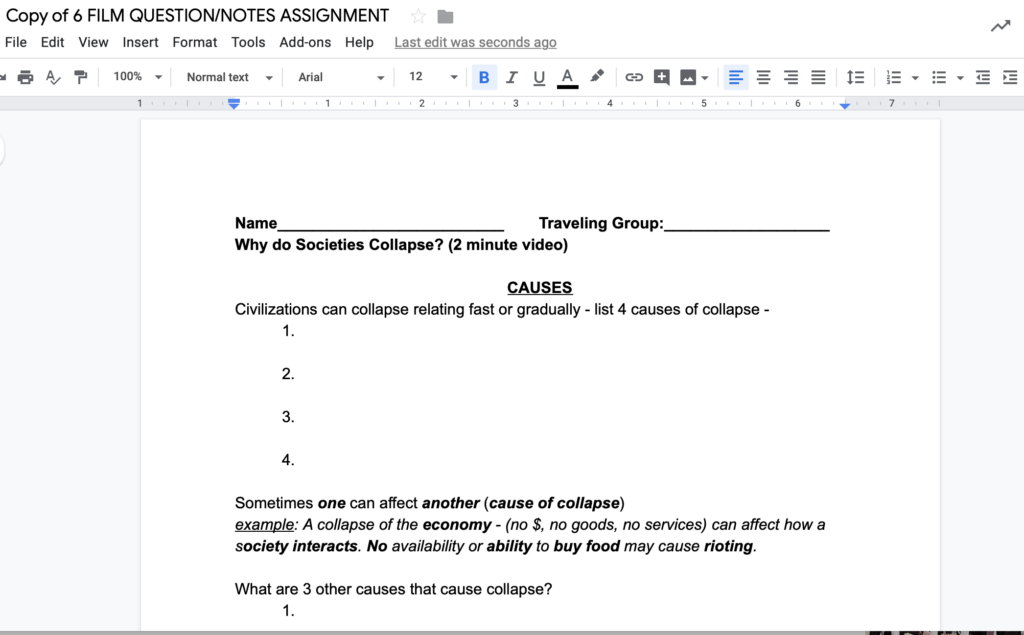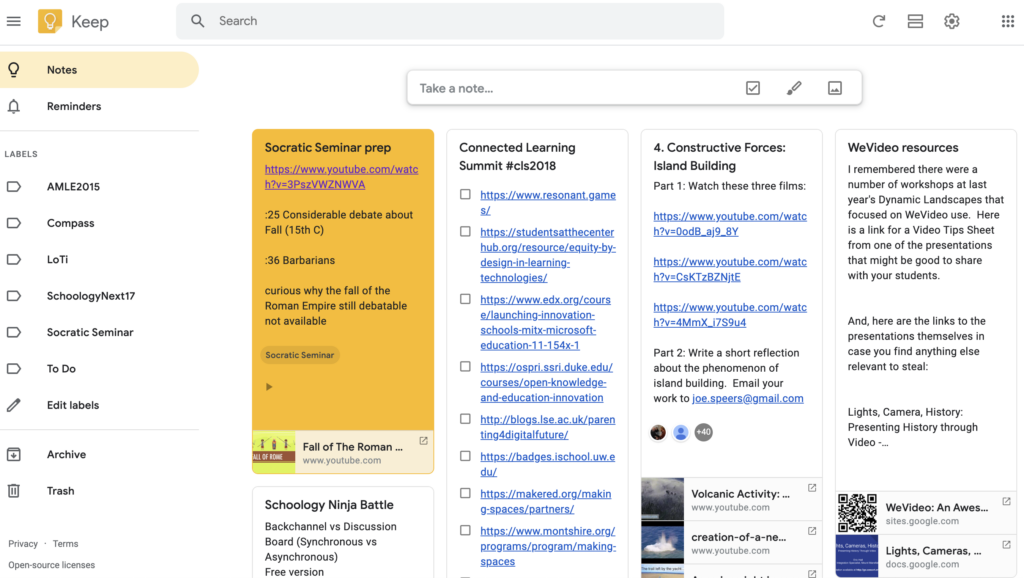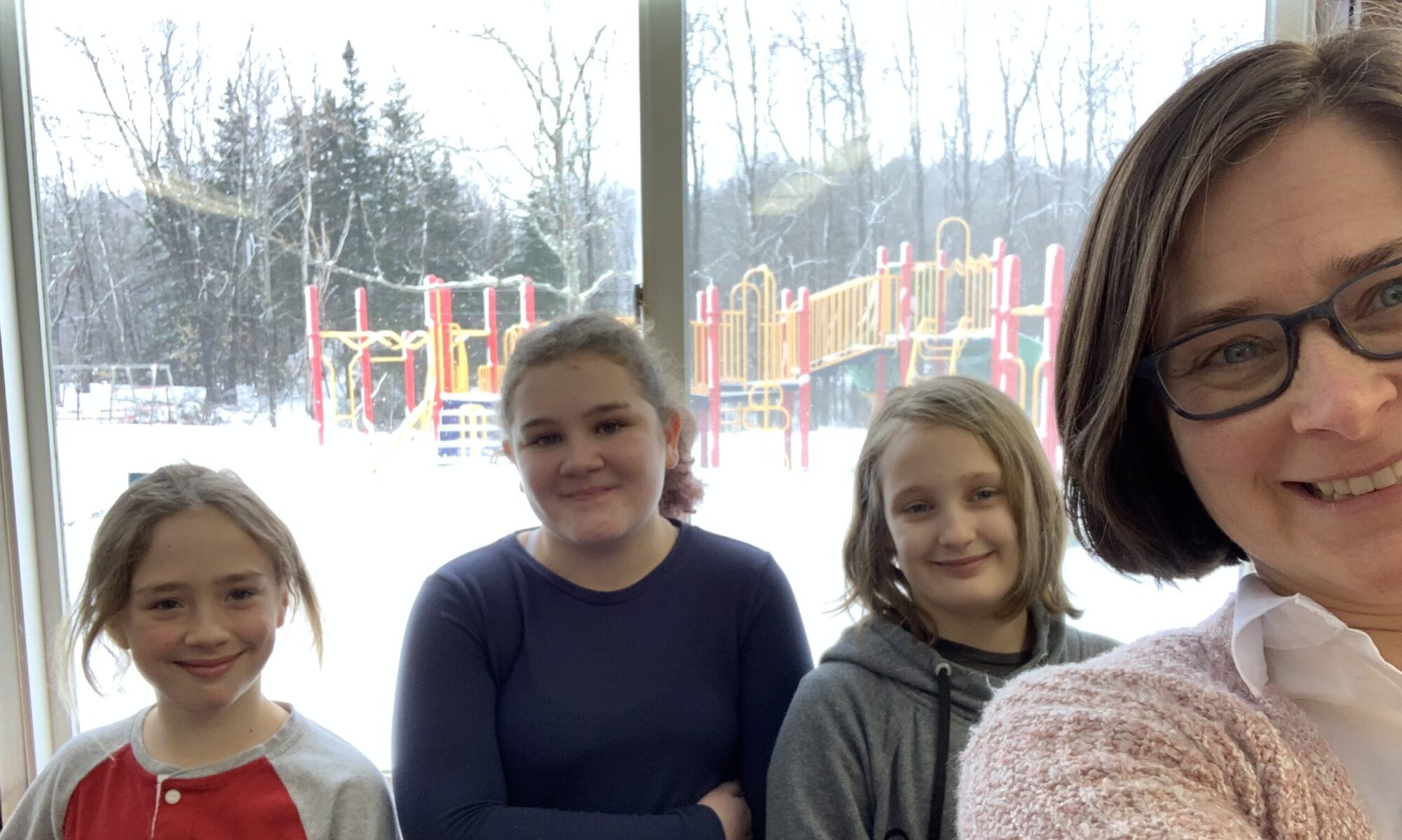A recent study from Common Sense Media confirms what those of us who spend time with young adults already believe to be true.
“Teens clearly prefer a visual medium for learning about the news.” A majority (64%) say that “seeing pictures and video showing what happened” gives them the best understanding of major news events, while just 36% say they’d prefer to read or hear the facts about what happened.”
Why not then, given the implications, teach students the listening, viewing, and analyzing skills necessary to engage with media effectively?
Integrated studies and socratic seminars to the rescue
Through their integrated studies block, Randolph Middle School 8th grade team set out to do just that. At Randolph Union Middle School, all teachers commit to using the high leverage practice of socratic seminars to provide plenty of opportunities for students to practice active listening and discussion skills.
A socratic seminar engages students in a content-focused and evidence-based discussion with their peers. Marisa Kiefaber, a 5th grade teacher at Rutland Town School, believes “Socratic seminars provide students with opportunities to practice and improve transferable skills, such as clear and effective communication and responsible and involved citizenship, and self-direction.”
The Randolph team set out to engage learners in an exploration of why certain societies fail. Students were to engage in multi-media rich research to prepare for the seminar. All agreed to provide structure and to scaffold skills necessary to be active listeners and engaged discussants.
First they practiced conversation starters and ways to maintain conversations once started. “We had some lighthearted convos and moved into some heavier philosophical themes as a first step. Our intention was to somewhat align with SBAC listening tasks as well.”
The power of scaffolds to remove barriers for all learners
Katy Novak advises teachers to scaffold listening skills.
“Students need to know the difference between the various types of listening in order to use them effectively and observe the world around them. Teach them the difference between active listening and cognitive listening and provide them with numerous options to practice. When cognitive listening students make inferences and generalizations, take notes, and formalize what they learned to make learning more permanent” (Innovate Inside the Box).
To build these important listening skills and establish a shared background knowledge base, Brian Kennedy, the social studies teacher on the team, selected six videos for students to watch. He created a time indexed note-taking sheet to help students be cognitive listeners and active viewers of media.

Building upon successes
A Universal Design for Learning Guideline is to “build fluencies with graduated levels of support for practice and performance. Students learned to see videos as a valid research resource for their socratic seminar through this structured note-taking exercise. A next step in building fluency is to provide direct instruction in note-taking as students begin their own research. Videos, podcasts and other forms of multi-media help them to gather evidence to answer the question why societies fail. And, teens prefer a visual medium, so it’s a win-win for all.
In the past, the 8th grade team asked students to use a tool for this called Videonot.es but discovered this time round the app is no longer available. Luckily they are a flexible bunch and from their own research, they found an alternative.
Google Keep kept them going
Watch youtube videos and practice cognitive listening by taking notes while viewing with Google Keep. Students install the Google Keep Chrome Extension. Here’s how.

How to take notes:
- start watching the video,
- pause at an important point in the narration,
- click on the Google Keep extension icon in the upper right-hand corner of the browser window
- Keep opens a note in that corner & automatically includes the video hyperlink in the note
- type time stamp & note
- repeat
Randolph teachers instruct students to include the timestamp. That way, during the socratic seminar, they have ready access to key evidence from their video-based research.
Google Keep notes can be used much like index cards to structure research. Tag each note to a topic or concept using the labeling feature. In addition, use the color-coding feature for organizational purposes. A bonus: add a collaborator to the notes for group projects and for keeping teachers in the loop of note-taking progress.

Keep removing barriers
Teachers may want to offer additional ways, using Google Keep, to support all learners in developing note-taking skills. The Google Keep app allows a note-taker to use the audio feature within the app for voice-to-text functions. Or a student can use the phone’s voice-to-text function to do the same thing.
Watch this short video to see the Google Keep mobile app in action.

Keep up with all that Google Keep has to offer
Want to know more about Google Keep? Dottotech reviews some of Google Keep’s other features. Or to use other tools to help students take notes while viewing media, check out this Take Notes Guide.
Bigger implications
From the same Common Sense Media study quoted above we learn that:
Teens get their news more frequently from social media sites (e.g., Facebook and Twitter) or from YouTube than directly from news organizations. More than half of teens (54%) get news from social media, and 50% get news from YouTube at least a few times a week. Fewer than half, 41%, get news reported by news organizations in print or online at least a few times a week, and only 37% get news on TV at least a few times a week.
It is our job as educators to help create engaged citizens and critical thinkers. One way is to provide opportunities for students to practice media literacy skills.
“Being media literate includes the ability to access, analyze, evaluate and create media in a variety of forms.”
And, a key part of that practice is plenty of opportunity to apply what they’ve learned through respectful and evidence-based discussions.
How might you help students learn the skills of effective media consumption and provide ways to safely practice such important life skills?


